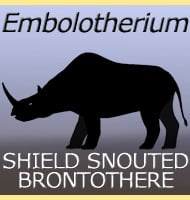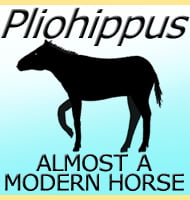Embolotherium
In Depth As an Asian brontothere, Embolotherium rivals large North American species like Megacerops in terms of size. However a full skeleton of Embolotherium remains unknown to science and this conclusion is based upon comparison of the known parts of Embolotherium with the more complete remains of other brontotheres. Whereas many brontotheres have ornamentation on … Read more

